 |
| August 1, 2004 Channel Classics Rerecords the Standard Repertoire for SACD
Interesting, then, that I have received a press release from Channel Classics Records B.V., indicating that the enterprising Dutch label has made an agreement with the Budapest Festival Orchestra and its maestro, Ivan Fischer. It is not entirely exclusive, but it is to be regular. Channel will record the orchestra in standard repertoire; the sales gimmick will be that all recordings will be released on hybrid multichannel SACDs. This makes good sense: There might be two or three dozen CD recordings of any given standard work in print, but there are few multichannel SACD and DVD-Audio discs. Channel Classics has kicked off its Budapest connection with a recording of Rachmaninoff’s Symphony 2 and Vocalise. The brooding symphony receives a probing, sensitive, virtuoso performance from Fischer and the first-rate BFO. Tempos are a bit faster than usual without seeming rushed, and rubato is used to great effect but never overdone. The overall orchestral sound is rich and robust, with ideal balance, including sufficient highs and lows. The rear channels provide just the right amount of sound reflection to place one inside a large concert hall. Fischer and the BFO’s next recording for Channel, set for fall release, will be Tchaikovsky’s Symphony 4 and Romeo and Juliet. Here are four magnificent high-resolution recordings that made the Radical cut this month:
Though well known in Britain, Claire Martin was a recent discovery for me here in the US. What a great jazz vocalist she is. She has a sexy, throaty lower range, a middle voice smooth as honey, and ringing high notes. As a stylist, she reminds me of Cleo Laine, Anita O’Day, and June Christy, while maintaining her own unique personality. She sings standards here, bringing new insight and intimacy to such favorites as "Black Coffee," "These Foolish Things," and "Something’s Coming," from West Side Story. Her upbeat version of "Love at Last," and her sizzling singing of "The Gentleman is a Dope," are as definitive as any out there, and her sultry version of "It’s Raining in My Heart" will resonate with anyone who has experienced a painful romantic breakup. Martin is backed by musicians up to the task, and there are notable instrumental riffs throughout the disc. Most of the sound seems placed in the center channel, with some spread to the left and right. The surrounds are used only for appropriate ambience. The dynamic range is good, the frequency range exemplary, and the high-resolution sound scores from beginning to end -- this is one of the most natural-sounding jazz recordings in a long time.
Frank Zappa, who died in 1993 at the age of 53, was one of the most energetic musicians in history, leaving 61 recorded albums, many of them multiple-disc sets. He was a rock bandleader, a performing musician, and a composer. Classical musicians have been fascinated with his compositions, and this crossover SACD, recorded in 1994-95 and originally released on CD in 1995, is a result of their attentions. The Swedish Omnibus Wind Ensemble has arranged 14 Zappa compositions, thrown in Ravel’s BolÚro as a bonus, and come up with one of the most delightful recordings in recent memory. Virtuoso playing, a sense of lyricism, imaginative instrumentation, and a general joie de vivre abound. Opus 3 has employed the Blumlein single-point source stereo recording technique since its first disc, and claims that this makes the rear-channel information already available. That’s for a 4.0-channel presentation -- this disc has no subwoofer track or center channel. But when the sound is this clear and bright and the instrumental presence is so clearly that of a live ensemble, who needs them? The balances are immaculate, and all of the exotic percussion touches, the burr of the bassoon, and the resonance of the French horns are perfect for demonstrating the superior reproduction of high-resolution SACD. Put on track 4, "Let’s Make the Water Turn Black," with its bouncy refrain and saucy character, and try to stop listening after that. I double-dog dare you.
Yet another recording of The Four Seasons? Yes, but with a twist. There existed, in Vivaldi’s lifetime, a virtuoso orchestra in Dresden that had a large complement of wind players. Vivaldi wrote music specifically for this ensemble, such as the Concerto per l’Orchestra di Dresda, RV 577. Federico Guglielmo, violin soloist and leader of this recording, presumes that the Dresden ensemble might have played the more famous Seasons as well, with wind parts added. He has reconstructed Spring for recorders, oboes, bassoons, horns, and strings; Summer for recorders, bassoon, and strings; and Fall for oboes, horns, bassoon, and strings. Winter, owing to its peculiar key of F minor, has been left for strings alone. Whether or not the result is historically accurate, it sounds stylistically correct, and the new wind parts add much to the works’ programmatic nature. The individual pieces still emerge as violin concertos, even if the solo part is occasionally given to or augmented by one of the winds. The disc is further enlivened by the inclusion of some "four season" music, by Vivaldi’s little-known contemporary Giovanni Antonio Guido, that proves thoroughly entertaining, if not as significant as Vivaldi’s effort. Overall, the project makes one more aware of Vivaldi’s genius at incorporating program effects into concert music. After hearing this recording, the Baroque master sticks in one’s mind as a visionary. Guglielmo and his 13 musicians play all of this music with breathtaking, note-perfect accuracy. Intonation is spot on, the ornaments are tossed off without a hitch, and a joyful spirit permeates each movement. The engineers, too, have done their part. The recording is close-up and detailed, yet never strident or in one’s face. Stereo separation and stage depth are ideal. The overall sound is as from the first row of a very reverberant room in which the audience is on the same level as the performers.
Pictures at an Exhibition, in the orchestration by French composer Maurice Ravel, is about tied with Holst’s The Planets as the work most recorded on multichannel SACD and DVD-Audio discs. And why not, considering its broad tonal palette, which contains every orchestral color imaginable? Though Mussorgsky was a crazed alcoholic, he was also a visionary, and his vivid imagery, coupled with Ravel’s spot-on knowledge of the orchestra, produced a winning composition that has been played countless times since its premiere. Theodore Kuchar’s broad, incisive reading earns its place among the top three or four. The disc contains some interesting fillers. Mussorgsky was so drunk and sick most of the time that he left many of his pieces incomplete. His original version of A Night on Bare Mountain is wild and woolly, with harmonies that must have seemed weird and futuristic in the 19th century. His compatriot Rimsky-Korsakov produced a harmonically cleansed version after Mussorgsky’s death, and both are included here. The National Symphony Orchestra of Ukraine plays with excellent tone and precision. If you need proof, check out the woodwinds in Tulleries, in Pictures. The exciting sound is large and reverberant yet quite detailed. So far, the best Naxos multichannel recordings have come from Russian sessions, and this release signals that the label’s excellent standard shows no signs of falling. The Great Gate of Kiev in Pictures is of demo quality, with its resounding bass drum, pungent brass, and shimmering cymbal clashes. The Hopak from Sorochintsy Fair is likewise impressive. ...Rad Bennett
Ultra Audio is part of the SoundStage! Network. |
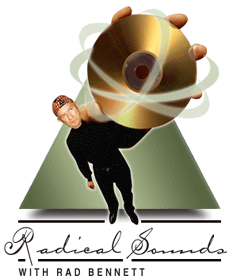 Most recording companies have
let lapse their recording contracts with American orchestras. The days when Sony had the
exclusive right to record the Philadelphia Orchestra and the New York Philharmonic, while
RCA had the Boston and Chicago symphonies, are gone. Telarc still seems to have an
exclusive with the Atlanta Symphony, but largely, signing a "house" orchestra
has become too expensive a risk.
Most recording companies have
let lapse their recording contracts with American orchestras. The days when Sony had the
exclusive right to record the Philadelphia Orchestra and the New York Philharmonic, while
RCA had the Boston and Chicago symphonies, are gone. Telarc still seems to have an
exclusive with the Atlanta Symphony, but largely, signing a "house" orchestra
has become too expensive a risk.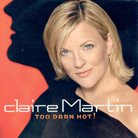 Claire Martin: Too Darn
Hot!
Claire Martin: Too Darn
Hot!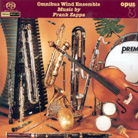 Zappa: Music by Frank Zappa
Zappa: Music by Frank Zappa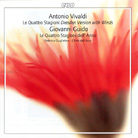 Vivaldi: The Four Seasons
Vivaldi: The Four Seasons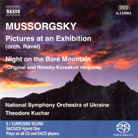 Mussorgsky: A
Night on Bare Mountain (original and Rimsky-Korsakov versions); Hopak;
Golits´n’s Exile; Pictures at an Exhibition (orch.
Ravel)
Mussorgsky: A
Night on Bare Mountain (original and Rimsky-Korsakov versions); Hopak;
Golits´n’s Exile; Pictures at an Exhibition (orch.
Ravel)